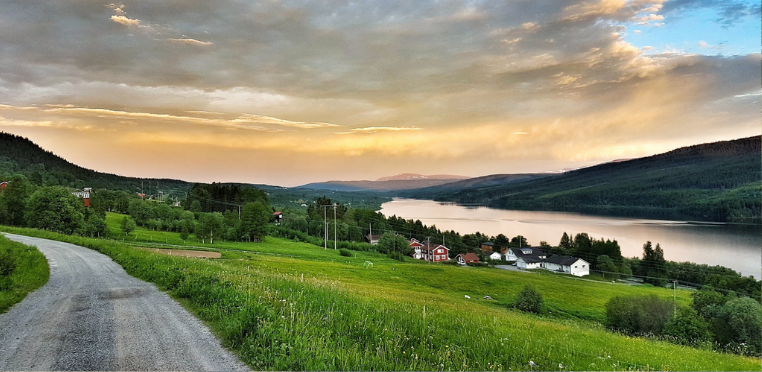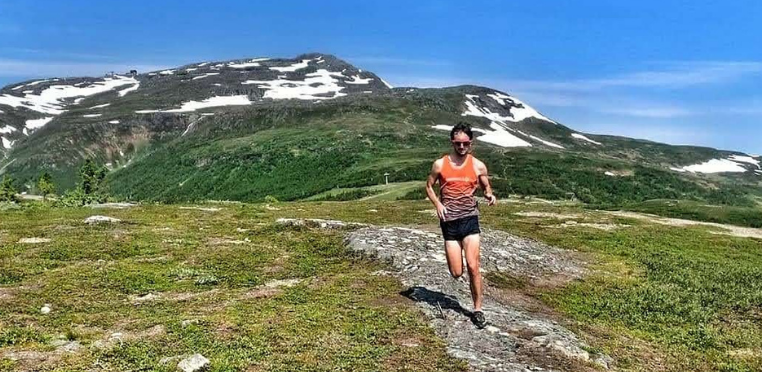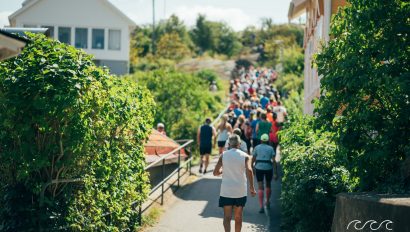5 Ways to Make Your Race More Sustainable

We all love the nature we have in our world – but how can we enjoy our natural resources without having a negative impact? In this article we give you 5 easy-to-implement tips for how you can make your race more sustainable.
Here is the post in Video format if you prefer to watch:
Measure your Environmental Impact
First though, it might be worth taking a look at the carbon footprint for your race and discerning where you might be able to make the biggest impact. There are plenty of tools that you can find and use online. The Carbon Trust has this one for instance. Additionally, it’s important to understand your influence as a race organizer. If you can show your participants a healthy and sustainable way of racing, perhaps they will go home and lead healthier and more sustainable lives afterwards too!
5 Ways to Make Your Race More Sustainable:
- Encourage longer stays for your participants that are traveling internationally
- Give recycled medals or t-shirts for your participants
- Use packaging free drinks points or aid stations
- Recycle bib-numbers
- Organize a ‘plogg’ after your race to clean up the trails in your local nature!
Now, let’s get into the details for each point:
1. Encourage Longer Stays for Your Participants
You organize a cool race, right? Well, now you’re attracting the attention of the connoisseurs of the scene! But despite all the positives of organizing an internationally recognized race, it’s obviously negative with regard to the cross-continental travel for participants getting to your race. For many international races, this far outweighs the carbon-cost of the other parts of the race organization.
It is therefore important to encourage your participants to stay for as long as possible in your country and locality. This is not only good for your local economy, it spreads the carbon-cost of international travel over many different industries.
However, you can always encourage carbon-offsetting for travel to your race too – or even add it into your budget, so that you can offset for your participants after the race.
2. Give Recycled Medals or T-shirts for Your Participants
This has become very popular recently – and is appreciated highly by participants as well. It clearly signals that you are thinking about the details of your race in a sustainable way.
Earth Runs creates biodegradable medals from cardboard pulp. Each medal also contains seeds and can subsequently be planted in the garden! Then there are companies like Raw Cut Studio that make fantastic medals and designs in wood that can really synergise with the feel of your race.
Or, if you decide to go with a more standard medal type, you can recycle any leftover or over-ordered medals with sportsmedalrecycling.com or other initiatives like medals4mettle.org. Another tip is not to date your give-aways and finisher t-shirts – then you can use any left-overs for the next edition!
Similar to medals, there are many clothing companies that are also offering finisher/race t-shirts that are made from recycled materials. Check with the company beforehand regarding their fabrication and production – plus check out our article here to learn more about race t-shirt options.
3. Use Packaging Free Drinks Points or Aid Stations
Plastic cups, paper cups, bring your own cup, or no cup? The choice is yours, and now races like the London Marathon are using seaweed capsules that are edible and biodegradable! Dropped capsules are no problem, and capsules can even be filled with sports drink. Check out Ooho for an idea of what is possible in this regard!
Also, you can partner with local stores or companies to provide food for your aid stations. In general, the more local and fresh, the less packaging! Asking your local supermarket about their bananas is a good way to fuel your participants without any extra packaging…though hopefully they didn’t fly too far to get to your race!

4. Recycle Bib-Numbers
There’s always a few participants who want to pin their bib-numbers on their toilet door at home after a cool race – but most get thrown away. Bib-numbers are often made from Tyvek, a plastic based polymer material (HDPE) from DuPont. HDPE can be recycled at many places (or even sent back to DuPont), but you need to make sure your participants realize this. Biodegradable numbers can also be found.
Better is to re-use the bib-numbers. Just collect numbers at the finish line (perhaps use them to draw a lottery prize after the awards ceremony). Then simply re-use them for your next event! Don’t worry about missing a few numbers sequentially – race management software often allows for easy changes to race number sequences.
5. Organize a ‘Plogg’ After Your Race and Clean Up Trails in Your Local Nature!
Even with the best intentions, your participants can drop a gel from a pocket, or perhaps a cup from your aid station goes astray. Ultimately, this type of rubbish can be very harmful to the local environment. One fun way of cleaning up could be to organize a ‘plogg’ along your race route (or even a different part of your local nature). Plogging was invented in Sweden and it essentially combines ‘plock’ (to pick-up) with ‘jogg’. Voila! A Plogg!
Finally, Communicate your Sustainability efforts
Being a sustainable organization is more and more important. Customers require us to focus on sustainability and many choose to buy from environmentally-focused businesses even if at greater personal expense. This is especially true for our clientele – outdoor enthusiasts are known to take the extra step required to conserve the earth. We predict it will be imperative for most races to take sustainability seriously, and it’ll also be important to communicate efforts in your marketing strategy. Hence, once you’ve implemented any of the tips above – let your (potential) participants know on social media and in any other communication. It’s also a good idea to make a special section on your website that describes the sustainable work you are doing.
We hope these tips help you out with the sustainability of your race. Let us know if you tried any of these tips, we would love to hear about how it went for you!


